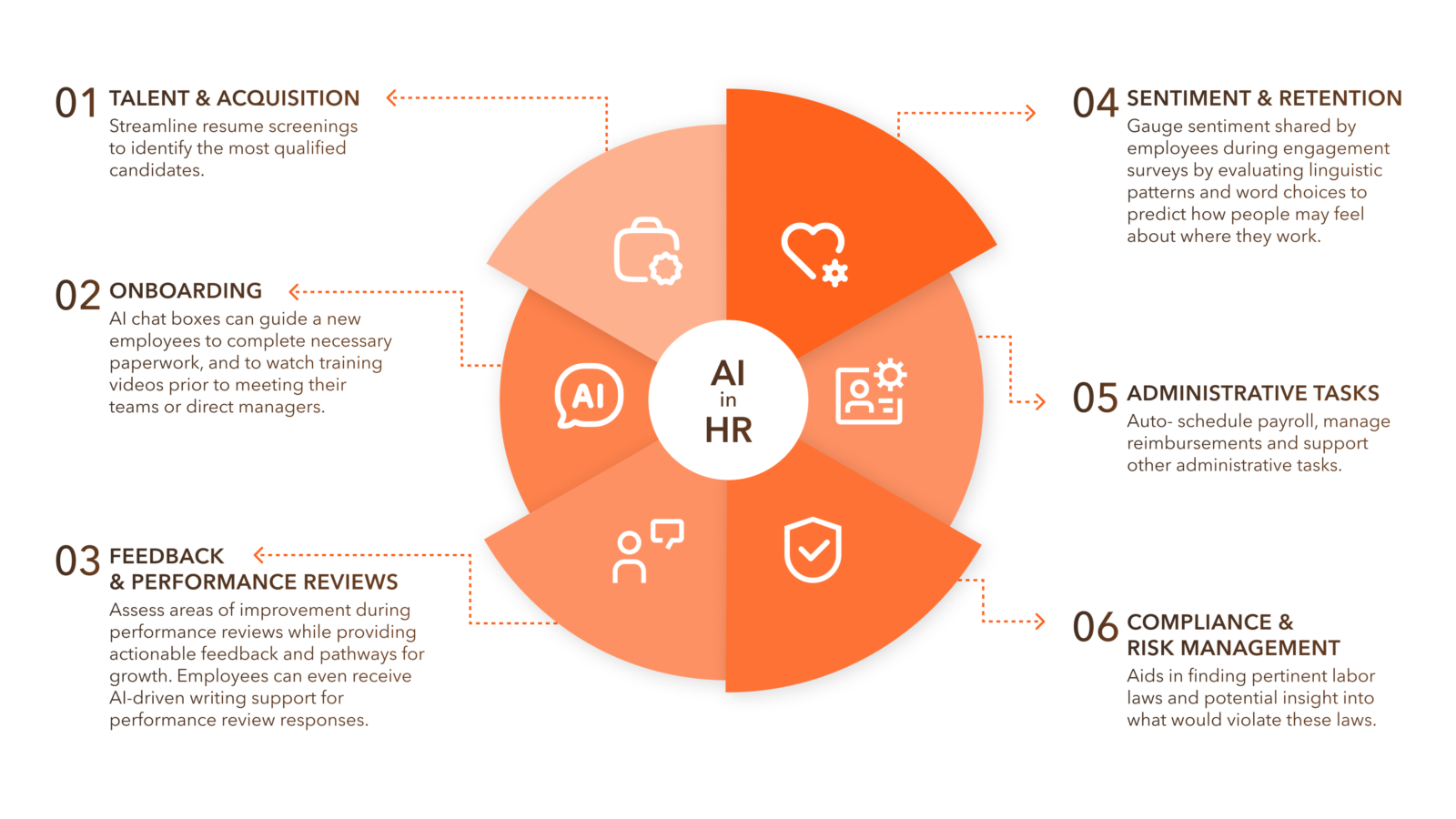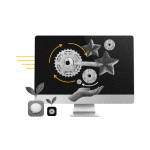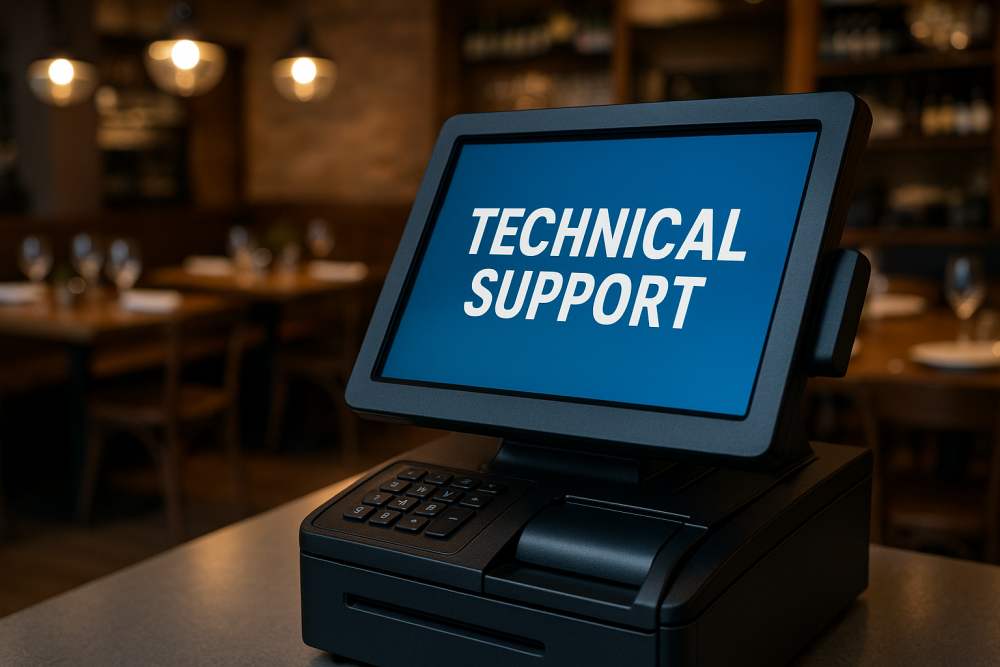



AI in HR: Benefits & Responsible Use
September 6, 2024

Gone are the days of paper records, written performance evaluations, physical ledgers, and stapling receipts for reimbursements. Small businesses and large corporations alike, whether in-person, hybrid, or fully remote, depend on digital HRIS platforms to manage their daily administrative tasks efficiently. They also use people management platforms to track employee performance reviews and compensation metrics, or they might subscribe to recruitment platforms and vendors for more streamlined talent management and acquisition. The emergence of these platforms correlates with the ever expanding responsibility of your Human Resources (HR) professional. Their role has evolved, and with it, so has the demand to advocate, protect, and inform people and businesses for greater success and stability. To address this demand, these different platforms support HR professionals through auto-generated or AI integrations that secure overall business growth and people management.
AI offers a range of benefits that can significantly enhance various aspects of business operations. By integrating AI thoughtfully and strategically within HR departments, companies can enhance their operations, improve employee experiences, and drive organizational success while addressing the potential challenges and risks associated with AI technology. It’s no secret that the introduction of AI inherently comes with risk, which is why implementing it in HR settings must be done thoughtfully and intentionally.
Sounds good right? What if I told you both opinions written above were AI-generated? Would you trust it more, or be skeptical of its well-crafted but uncontextualized opinion? There is some validity to these auto-generated statements – AI offers numerous benefits to HR professionals through strategic implementation. However, the question is not relegated to strategy. Rather, it is about the responsible use of AI as a conduit for informing processes and people management strategy.
It would be very difficult to argue the efficiency of AI and machine learning in the HR workforce. Everyday, there are more and more HRIS and people management platforms that market their integrations to support this very statement with incredible success. Let’s consider the following ways AI can support these HR functions:

Now as you are reading this, you might be asking yourself one of two questions:
1. What is the problem? This all sounds great!
Or…
2. This all sounds great, what’s the catch?
Ironically, both of these questions speak to the efficiency of AI in the workplace, but neither addresses the nuanced responsibility needed to source AI ethically. While AI can inform a HR professional, or a business of what are HR responsibilities, it does not speak to the intangible, unquantifiable, working qualities of a person that can couple auto-generated information with professional experience. This is the first step toward the ethical and responsible use of AI.
So what does responsible AI usage look like? Let’s revisit our list from earlier:
- Talent & Acquisition: AI and machine learning can streamline resume screenings to identify the most qualified candidates. While AI can certainly select qualified candidates based on role requirements, it cannot fully assess technical or interpersonal skills of these candidates such as collaboration, learning style or work ethic. Furthermore, just because AI concludes that these candidates are “most qualified” – it does not correlate to successful interviews. HR professionals must still remain unbiased in their approach to screening and consider every relevant aspect of that candidate before moving forward.
- Onboarding: AI chat boxes can guide a new employee to complete necessary paperwork, and to watch training videos prior to meeting their teams or direct managers. This streamlined approach provides new team members the advantage of a smoother onboarding, but it is completely impersonal and cannot fully speak to first-hand experiences within a working community. Even if an organization uses a virtual onboarding assistant, or an AI implementation feature in a HRIS platform, an HR-professional should still meet with new team members.
- Feedback & Performance Reviews: More and more platforms are implementing machine learning and AI to assess areas of improvement during performance reviews and provide actionable feedback and pathways for growth. AI is not a substitute for direct, constructive feedback or praise. Phrases like “good job,” “nice work”, or “you’re doing great,” from team leads or managers that may accompany auto-generated performance, is not feedback. Healthy and accessible feedback takes into consideration positional power in the workplace, learning styles, and reciprocity through organic conversation – all of which AI can speak to, but never model responsibly. Managers can use AI to frame the content of their feedback, but they should also contextualize their feedback with examples to reinforce actionable steps toward improvement or maintenance.
- Sentiment and Retention: AI can gauge sentiment shared by employees during engagement surveys by evaluating linguistic patterns and word choice to predict how people may feel about where they work. Similar to feedback and performance reviews, machine learning can recognize linguistic markers and score sentiment. However, without contextual understanding, the responsibility to understand sentiment and employee retention falls to the HR-professional to consider factors such as audience, employee tenure, recent onboardings/offboarding’s or region-specific responses from surveys or polls.
- Administrative Tasks: AI can auto-schedule payroll, manage reimbursements and support other administrative tasks. If there is an issue with payroll, or a computational error, a HR-professional would be responsible for resolving this issue.
- Compliance and Risk Management: AI provides HR professionals with the convenience of finding pertinent labor laws and potential insight into what would violate these laws.
| HR Function | AI Benefits | Considerations for Responsible Use |
|---|---|---|
| Talent & Acquisition | Streamlines resume screenings | While AI can certainly select qualified candidates based on role requirements, it cannot fully assess technical or interpersonal skills of these candidates such as collaboration, learning style or work ethic. Furthermore, just because AI concludes that these candidates are “most qualified,” it does not correlate to successful interviews. HR professionals must still remain unbiased in their approach to screening and consider every relevant aspect of that candidate before moving forward. |
| Onboarding | Guides new employees through paperwork | A streamlined approach provides new team members the advantage of a smoother onboarding, but it is completely impersonal and cannot fully speak to first-hand experiences within a working community. Even if an organization uses a virtual onboarding assistant or an AI implementation feature in a HRIS platform, an HR-professional should still meet with new team members. |
| Feedback & Performance | Provides actionable feedback | While AI can generate feedback, managers should review and contextualize this feedback to maintain a personal and empathetic touch. |
| Sentiment and Retention | Gauges employee sentiment | AI should help identify areas of concern, but HR should develop and implement solutions to address these issues. |
| Administrative Tasks | Automates payroll and reimbursements | Continuously monitoring AI systems ensures e accurate and timely processing of payroll and reimbursements, avoiding errors that could affect employee trust and satisfaction. |
| Compliance & Risk Management | Finds pertinent labor laws | Avoid depending solely on AI for compliance. Human oversight is necessary to catch nuances that AI might overlook, particularly in complex legal scenarios. |
Ultimately, AI can support the efficiency and informed approach to HR functionality and process execution. However, the ethical and responsible use of AI and machine learning implementation across digital platforms cannot be self-managed. HR professionals must evaluate the effectiveness of these integrations as they exist; fairly, without bias and with transparency. The responsibility to evaluate these tools, as well as the decisions informed by these tools, must take into account all of the above. But what do I know – I am just a robot.











Leave a Reply